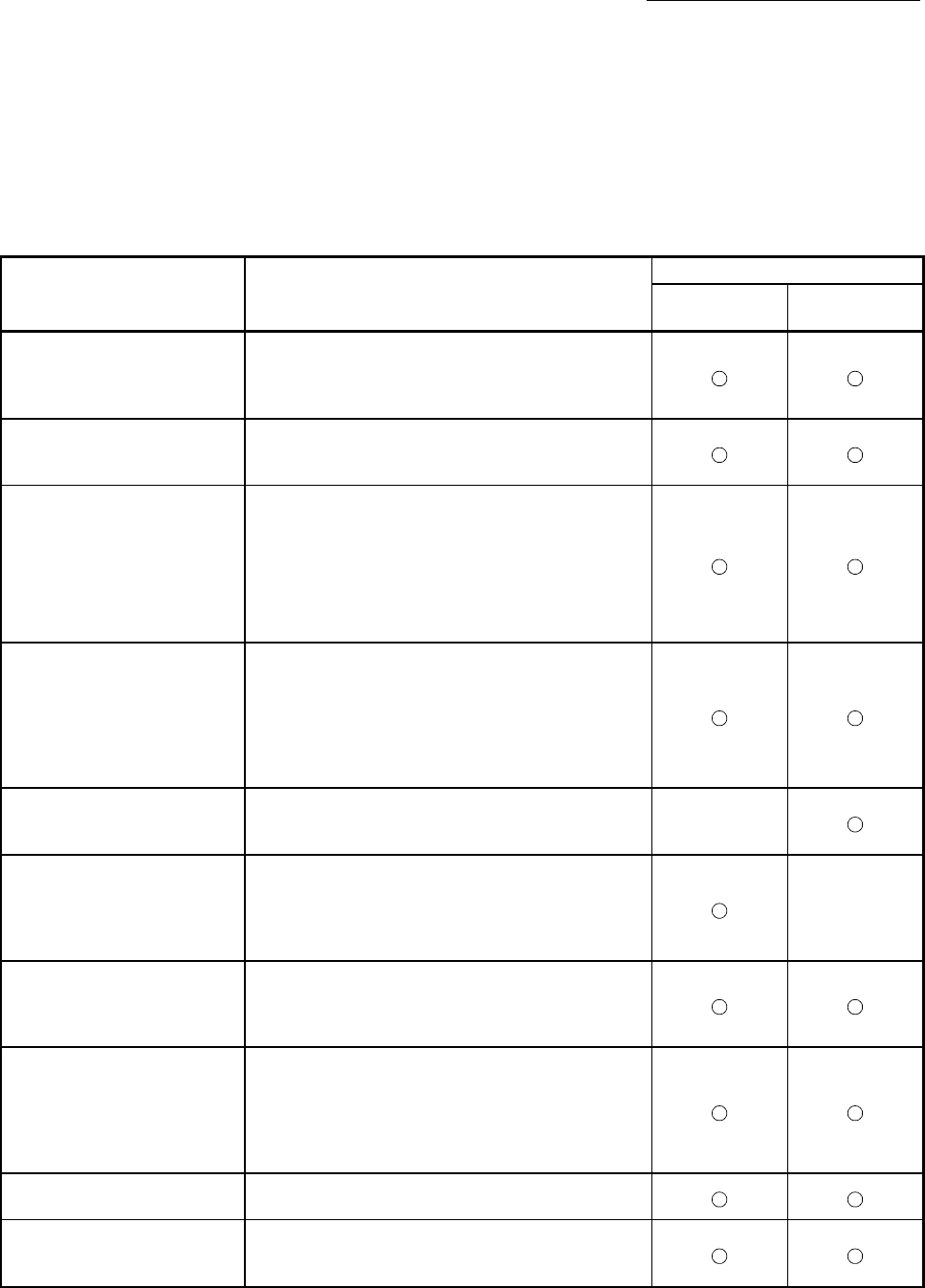
14 - 2
Chapter 14 Common Functions
14.1 Outline of common functions
"Common functions" are executed according to the user's requirements, regardless of
the control system, etc. These common functions are executed by GX Works2 or
sequence programs.
The following table shows the functions included in the "common functions".
Common function Details
Means
Sequence
program
GX Works2
Parameter initialization function
This function returns the parameter stored in the
buffer memory/internal memory and flash
ROM/internal memory (nonvolatile) of Simple Motion
module to the factory-set initial value.
Execution data backup
function
This function writes the "execution data", currently
being used for control, to the flash ROM/internal
memory (nonvolatile).
External signal selection
function
This function is used to select from the following
signals when using the upper/lower limit signal, near-
point dog signal, and stop signal.
• External input signal of QD77MS
• External input signal of servo amplifier
• External input signal via CPU (the buffer memory of
QD77MS)
External I/O signal logic
switching function
This function switches I/O signal logic according to
the equipment connected to the Simple Motion
module.
For the system in which with b-contact, upper limit
switch, and lower limit switch are not used, the
parameter logic setting can be controlled without
wiring if it is changed to a "positive logic".
History monitor function
This function monitors start history, error history,
warning history, and current value history of all
axes.
—
Amplifier-less operation
function
This function executes the positioning control of
Simple Motion module without connecting to the
servo amplifiers.
It is used to debug the program at the start-up of the
device or simulate the positioning operation.
—
Virtual servo amplifier function
This function executes the operation as the axis
(virtual servo amplifier axis) that operates only
command (instruction) virtually without servo
amplifiers.
Driver communication function
This function uses the "Master-slave operation
function" of servo amplifier. The Simple Motion
module controls the master axis and the slave axis is
controlled by data communication between servo
amplifiers (driver communication) without Simple
Motion module.
Mark detection function
This function is used to latch any data at the input
timing of the mark detection signal (DI1 to DI4).
Optional data monitor function
This function is used to store the data selected by
user up to 4 data per axis to buffer memory and
monitor them.


















